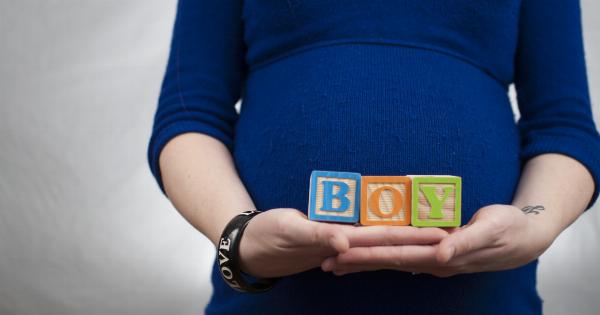One of the most exciting things about pregnancy is finding out if you are having a boy or a girl. While it is completely up to personal preference whether or not you choose to learn the gender of your baby, many parents-to-be can’t wait to know.
The question then becomes, when is the best time to find out?.
First-Trimester Screenings
During your first trimester of pregnancy, around 11-13 weeks, you will have several tests done to check the health of your baby. One of these tests, called the nuchal translucency (NT) test, measures the fluid at the back of the baby’s neck.
This fluid can indicate the likelihood of a chromosomal abnormality in the fetus. While the NT test is primarily used for screening for potential problems, it can also give insight into the gender of the baby. During this test, your doctor or ultrasound technician may see the genital tubercle position.
If the genital tubercle is angled upwards, the baby is likely a boy, whereas if it is angled downwards, the baby is likely a girl.
Gender Reveal Ultrasound
The most common way to find out the gender of the baby is through an ultrasound. Most doctors will perform an ultrasound between 18 and 22 weeks of pregnancy, which is a time when the baby’s anatomy is more developed and can be seen more clearly.
During this ultrasound, the technician will be able to see the baby’s genitalia and determine the sex. While there is no surefire way to predict the gender with 100% accuracy, ultrasounds are highly accurate in determining the sex of a baby.
Cell-Free DNA Testing
Cell-free DNA testing is a relatively new method of testing that is used to screen for certain genetic abnormalities. This test is done by analyzing fragments of DNA found in a pregnant woman’s blood.
While this test is primarily used for genetic screening, it can also be used to determine the sex of the baby. Cell-free DNA testing is generally performed between 10 and 22 weeks of pregnancy and is highly accurate in determining the sex of the baby.
Maternal Intuition
While not scientifically proven, many mothers claim to have a “gut feeling” about the sex of their baby. Some believe that this intuition is due to the mother’s increased awareness of her body and the changes happening within it.
While maternal intuition may not be considered a reliable method of determining the sex of a baby, it can be a fun and exciting way to make a guess before an ultrasound or other testing is done.
Additional Factors to Consider
While the methods above can accurately determine the sex of a baby, there are some additional factors to consider when deciding when to find out.
For example, some parents may decide to wait to find out the sex of their baby in order to keep it a surprise until birth. Additionally, cultural and personal beliefs may influence the decision to find out the gender. In some cultures, it is considered bad luck to find out the gender before birth, while others may have personal reasons for wanting to keep it a surprise.
In Conclusion
Ultimately, the decision to find out the gender of your baby is a personal one and should be made based on personal preference and beliefs.
If you choose to find out, there are several methods available to do so, including ultrasound, cell-free DNA testing, and first-trimester screenings. Consider the additional factors that may influence your decision, such as cultural and personal beliefs, and enjoy the excitement of finding out if you are having a boy or a girl!.






























